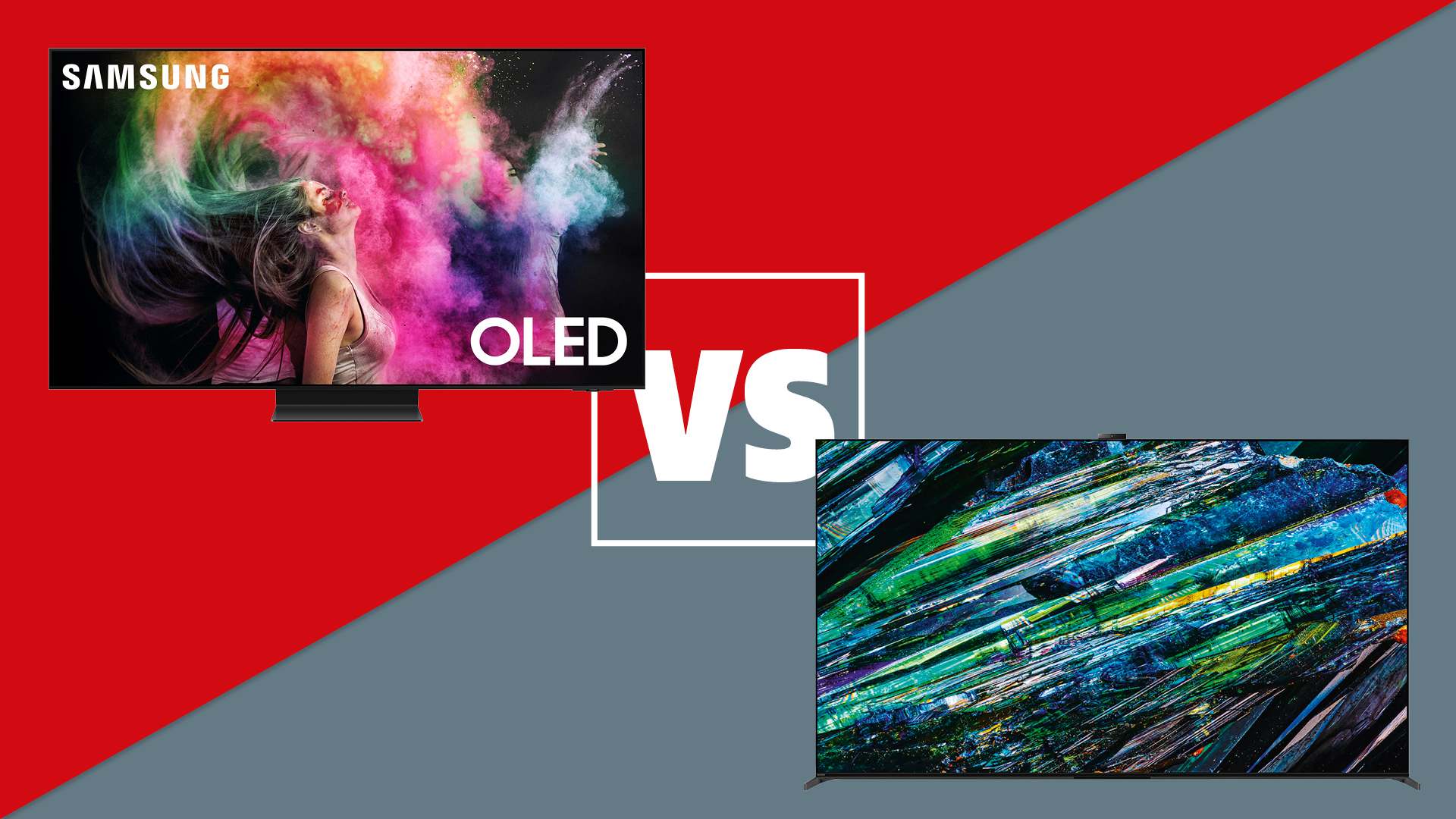
Editor's note: Since this guide was written the new Samsung S95D has replaced the S95C as the firm's flagship QD-OLED. You can get a full breakdown of how the newer model performs in our in-depth Samsung S95D review.
Sony doesn't have a newer QD-OLED than the A95L. Instead, its latest premium TVs for 2024 are set to be the Quantum Dot free, Bravia 8 OLED and Bravia 9 Mini LED premium sets. We're yet to review either of the newer Sony models.
If you're still interested in seeing how the older Samsung, which is still in stock, compares to the A95L based on our testing you can read our original vs guide below.
QD-OLED merges two of the most prominent TV display technologies, OLED and Quantum Dot, in order to boost the brightness and colour reproduction of standard OLED displays. Only two QD-OLED TVs hit shops last year, but both received rave reviews from us.
Samsung was the first to throw its hat in the ring, with the S95B QD-OLED. It earned five stars from us, thanks to its excellent vibrancy and dynamism, as well as its comprehensive gaming support. Sony followed shortly after with the A95K QD-OLED, which also took home a five-star review thanks to its bright, yet supremely natural and authentic picture and excellent sound performance.
Considering how much we like these two QD-OLEDs, you can imagine how excited we were to find out about Samsung and Sony's replacement models, the imaginatively titled S95C and A95L respectively. While only the former has arrived in our test labs, earning itself a four-star review, we have had two hands-on sessions with the A95L, and so have a pretty good idea of what it can do.
Consider this an early comparison based on what we have experienced thus far, what we know from the previous generation models and information that Samsung and Sony have released.
Samsung S95C vs Sony A95L: price
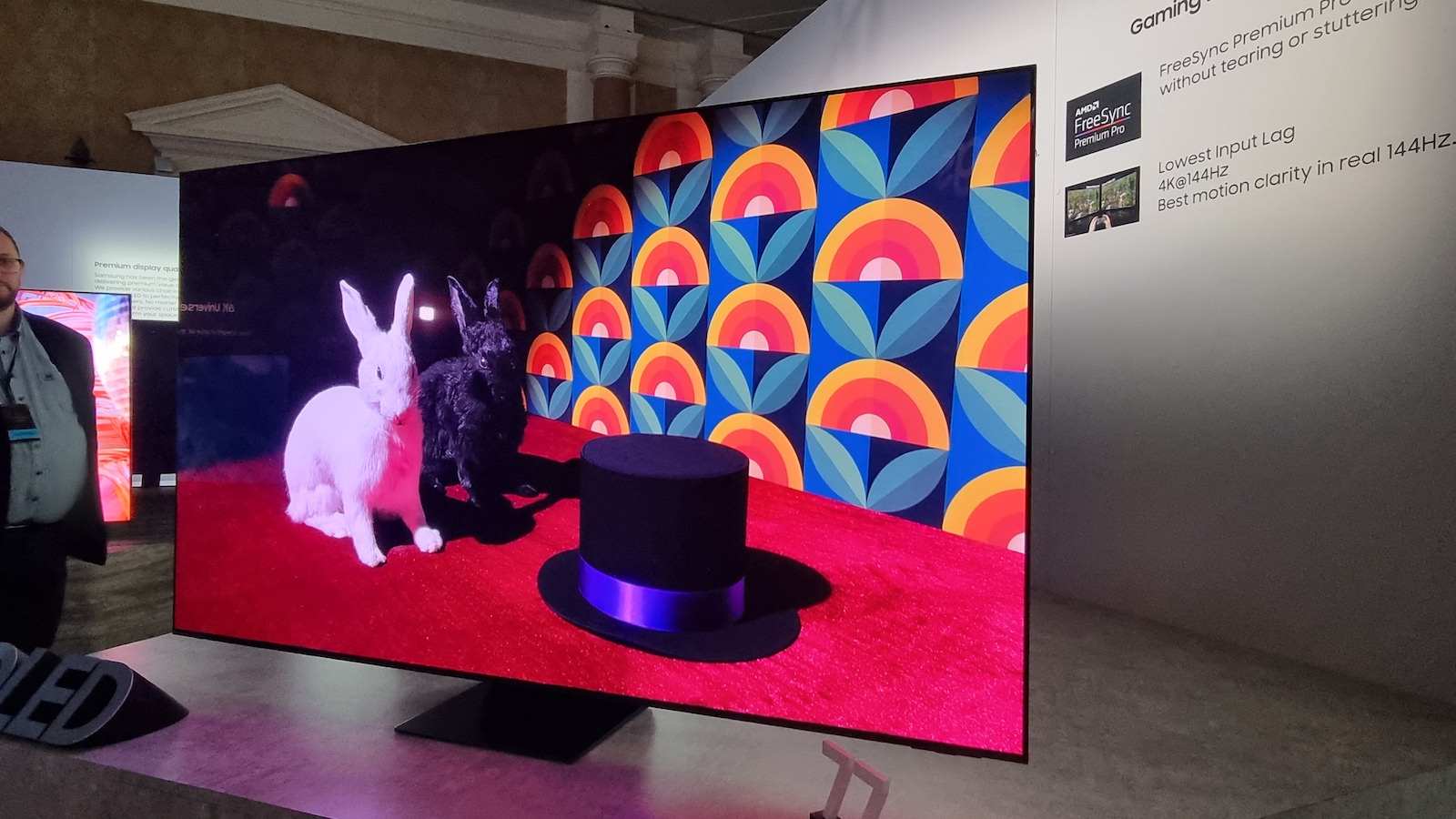
Like most consumer goods, TVs are getting more expensive. Both the Samsung S95C and Sony A95L are more expensive than their predecessors, in some territories at least (in the US, the A95L is a little cheaper than the A95K). But how do they compare?
As you can see from our table below, the A95L is pricier than the S95C at all sizes. The price gap is most keenly felt at the largest size – the 77-inch Sony is £900 / $500 dearer than the Samsung (the A95L's Australian pricing is still TBC). At 65 inches, the price difference is £100 / $200, and at 55 inches it's £300 / $300.
That's on paper, but in reality, the price gap is likely to be much larger. The Samsung has been on sale a while already, and has seen some significant discounts – at time of writing, you can pick up the 65-inch model for £2399 / $3000, which is £1200 / $300 less than the launch price, and a whopping £1300 / $500 less than the Sony.
So the A95L has a lot of work to do.
Samsung S95C vs Sony A95L: build
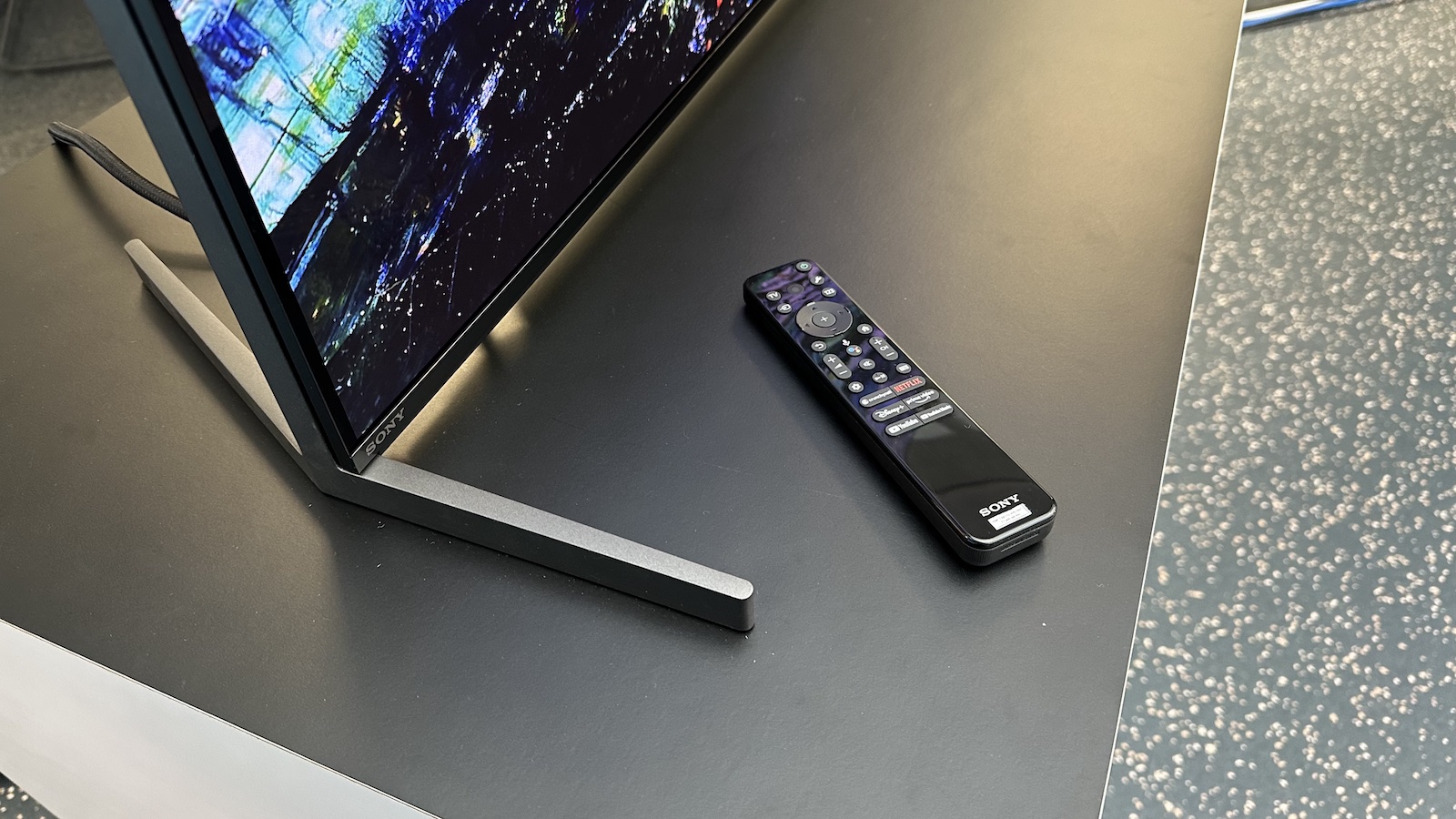
Both the Sony and Samsung feature the same second-generation QD-OLED that comes in the familiar 55- and 65-inch sizes seen last year, however, the 77-inch variant for both models is a new addition. Samsung Display is obviously eager to capitalise on QD-OLED and push development forward, so introducing new size options to expand the range is a good start.
Both models also feature thin bezels and include a stand in the box for convenient placement on a media unit, although they can both be wall mounted if you so desire. Samsung opts for a centre-mounted, low-profile square pedestal, whereas Sony has swapped its incredibly heavy stand from the A95K for a pair of angled feet (as seen above). The versatile stand from the A95K will be missed as it could be mounted in two ways to either sit flush against a wall or give the TV a floating appearance, but its deceiving mass could be a problem.
The A95L's feet can be positioned more centrally on the 77-inch model to reduce its footprint, but not on the 55- and 65-inch variants. All models can be raised to accommodate a soundbar.
Samsung's TV features a strikingly thin design; in fact, the set itself is a uniform thickness of 1cm throughout. This is achieved through the use of Samsung's One Connect box, which is an external hub that houses the guts of the TV as well as all of the connections. This clever design means the TV itself remains clutter-free.
The Sony on the other hand is a little chunkier, partly because the internal components and connections are on the main body of the TV, but also because its innovative audio system involves actuators that vibrate the QD-OLED panel in order to generate sound. It's something of a case of function over form, although it must be said that the A95L, while thicker than most OLED TVs, is very stylish with it.
Samsung S95C vs Sony A95L: features

As you'd hope for two 2023 flagship OLED TVs, both the S95C and A95L are absolutely feature-packed. Starting with HDR support, the Samsung and Sony both feature the standard HDR10 and HLG formats, but then Samsung adds HDR10+ while Sony opts for Dolby Vision. Samsung continues to choose HDR10+ over Dolby Vision, which is a continuing frustration, as more disc and streaming content from the likes of Netflix and Disney Plus supports Dolby Vision.
Gamers should feel right at home on either of these TVs as they feature 4K/120Hz support via their HDMI 2.1 ports. However, while Samsung uses its own, in-house chip, which features four of these HDMI 2.1 ports, Sony is using the latest MediaTek Pentonic 1000, which has just two (its other two HDMIs are of the older, 2.0 spec). What makes it worse is that one of these HDMI 2.1 sockets is also for eARC, so if you need that for a soundbar of AVR, you'll have just one HDMI 2.1 socket left. That isn't ideal if you're a serious gamer who owns multiple consoles. Back to the positive gaming features, both sets support VRR and ALLM.
Moving on from picture to sound, both TVs support Dolby Atmos via their own speakers and can output it via the HDMI eARC socket.
Finally, as you'd expect, both TVs have smart functionality, although both use different systems. Samsung is using its Tizen operating system found on many more of its prior TVs. Here you'll find all the streaming apps you'd expect such as Netflix, Disney Plus, Apple TV and Amazon Prime Video, as well as some Samsung-specific features such as Samsung TV Plus and Xbox game streaming.
On the Sony side of things, you'll find Google TV, the same as on the A95K. Google TV can be found on other TVs, as well as on the Google Chromecast with Google TV. It is a useful and intuitive smart platform with wide app compatibility, so we have no complaints regarding its return on the A95L. It also means you'll be able to use Google Assistant to navigate the smart system via voice commands.
Samsung S95C vs Sony A95L: picture
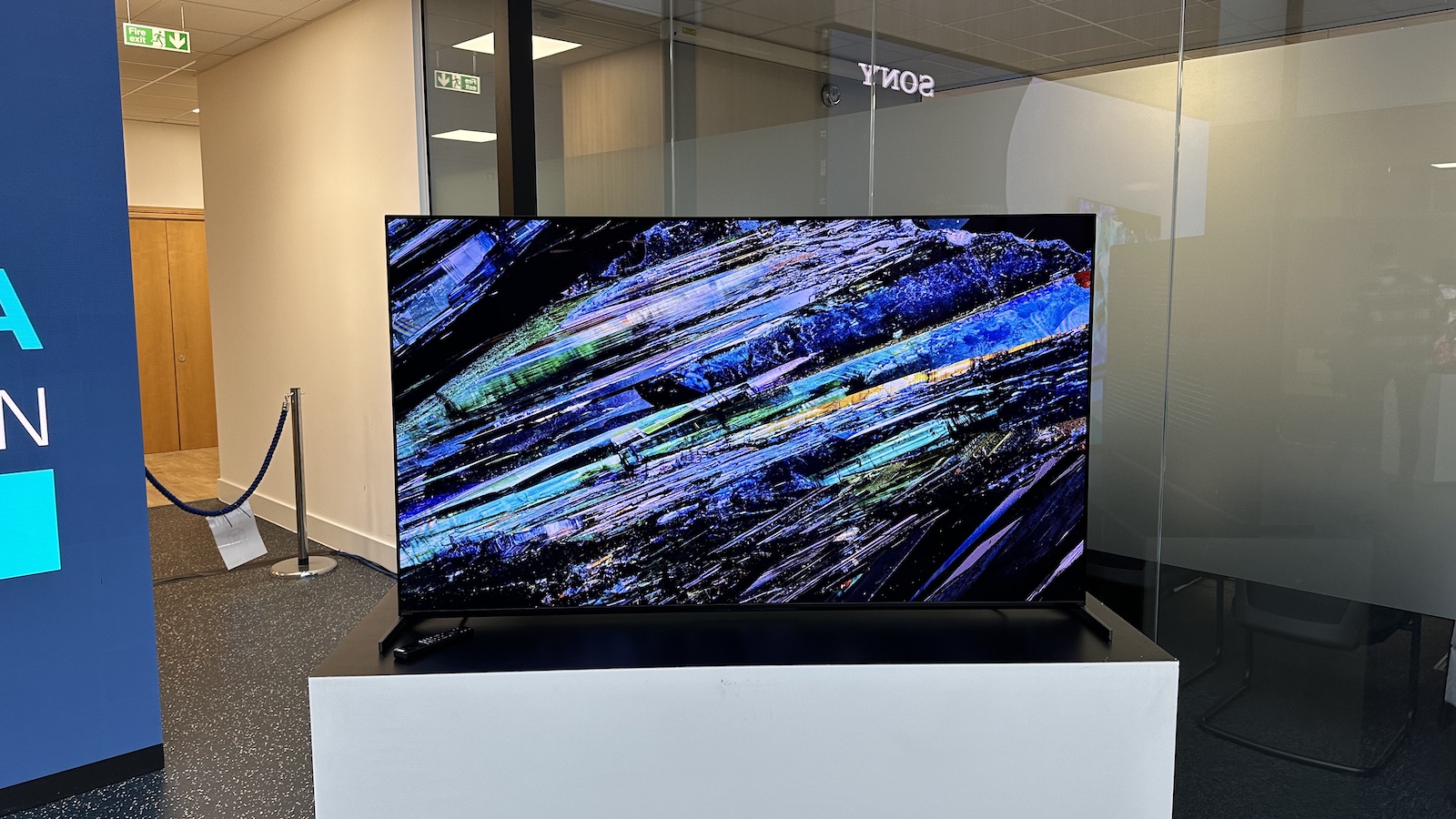
While we want to stress again that we haven't put the Sony TVs through its paces in the same way we would for a full review, we have done so with the Samsung and it yielded some interesting results.
We were stopped in our tracks when we found that Filmmaker mode – our usual preset of choice for testing TVs – just looks too dull. Top Gun Maverick is the dictionary definition of bold, but here it looks too subdued, with shadow detail taking a particularly bad hit.
Despite this, there is still a lot to like here, with its sharp, detailed and solid image that feels very three-dimensional. We even saw improvements in the image's vividness when we switched it over to Movie preset or changed Dynamic Tone Mapping to Active. Here, colours had a nice vibrant pop, and despite not looking particularly accurate per se, they sure were punchy. However, we wouldn't call it subtle, as, despite colours looking balanced (if a little rich), we found the shading to be heavy-handed and crush details.
Finally, the Samsung S95C requires some hands-on adjustment when it comes to motion, as the Movie preset is overly processed, while the Filmmaker mode leaves the processing out which is ideal for purists, but some will be put off by the slightly noticeable judder. Delving into the Picture Clarity settings can remedy this to an extent, but Sony is still the one to beat when it comes to motion.
Our initial demo of the Sony A95L was a bit brief, but our second one proved much more in-depth. Placed side-by-side with the Samsung S95C (and LG G3), the Sony looked the clear winner in terms of picture quality. It's worth nothing this wasn't under proper testing conditions. But we were still seriously impressed by the Sony.
Placed next to a Sony BVM-HX310 pro-level mastering monitor as reference, the A95L came the closest to the monitor's more authentic picture (this is the kind of screen used by professional movie studios to master a film). The A95L's picture was more balanced and poised than the S95C's, and while it was brighter, it never looked artificially so, preferring to err on the side of natural instead. On this (admittedly not final) evidence, the A95L looks the more impressive TV.
Samsung S95C vs Sony A95L: sound
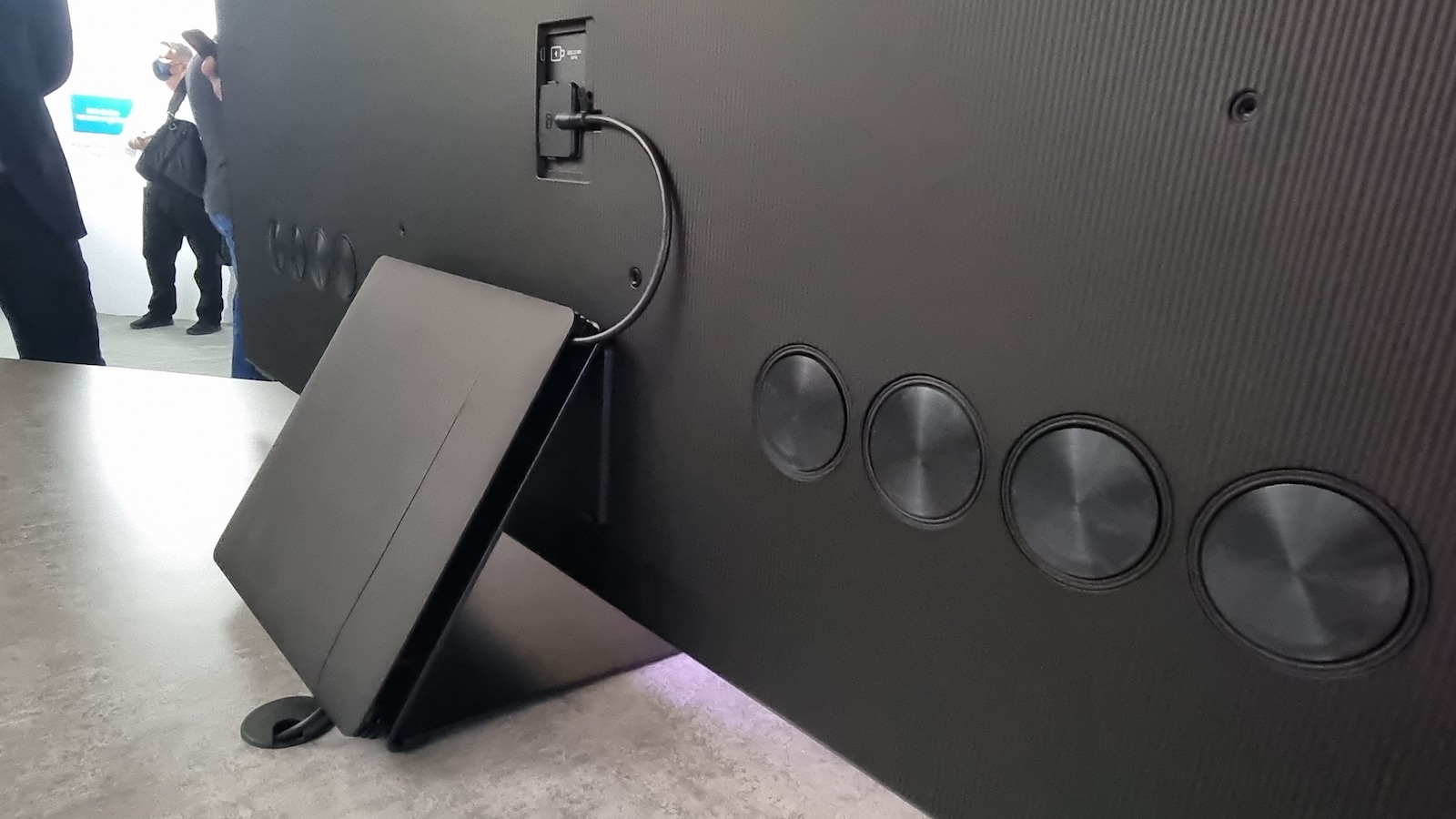
Samsung has upgraded the speaker arrangement for the S95C, with a 70W 4.2.2 sound system onboard. That's an improvement on the S95B's 60W 2.2.2 system, which we weren't exactly enamoured with. However, the S95C's new speaker arrangement is punchy and dynamic with solid vocal clarity. But the sound doesn't project particularly far into the room and the bass is lacking both weight and depth.
Sony's OLED TVs use actuators to vibrate the whole screen in order to make sound. It generally results in the picture and the sound being spatially linked in a way that other TVs struggle to match.
In fact, the A95L has essentially the same sound system as the A95K, which we described as one of the best-sounding TVs you can buy.
In our first demo, the A95L was muted. Fail. In our second, the sound section was quite brief, but still gave us a flavour of the TV's audio capabilities. We were impressed, with increased volume, better dynamics and more detail all evident. It sounded like it had more bass weight than previous Sony OLEDs too, though we'll have to wait for the review sample before we can confirm this.
Samsung S95C vs Sony A95L: early verdict
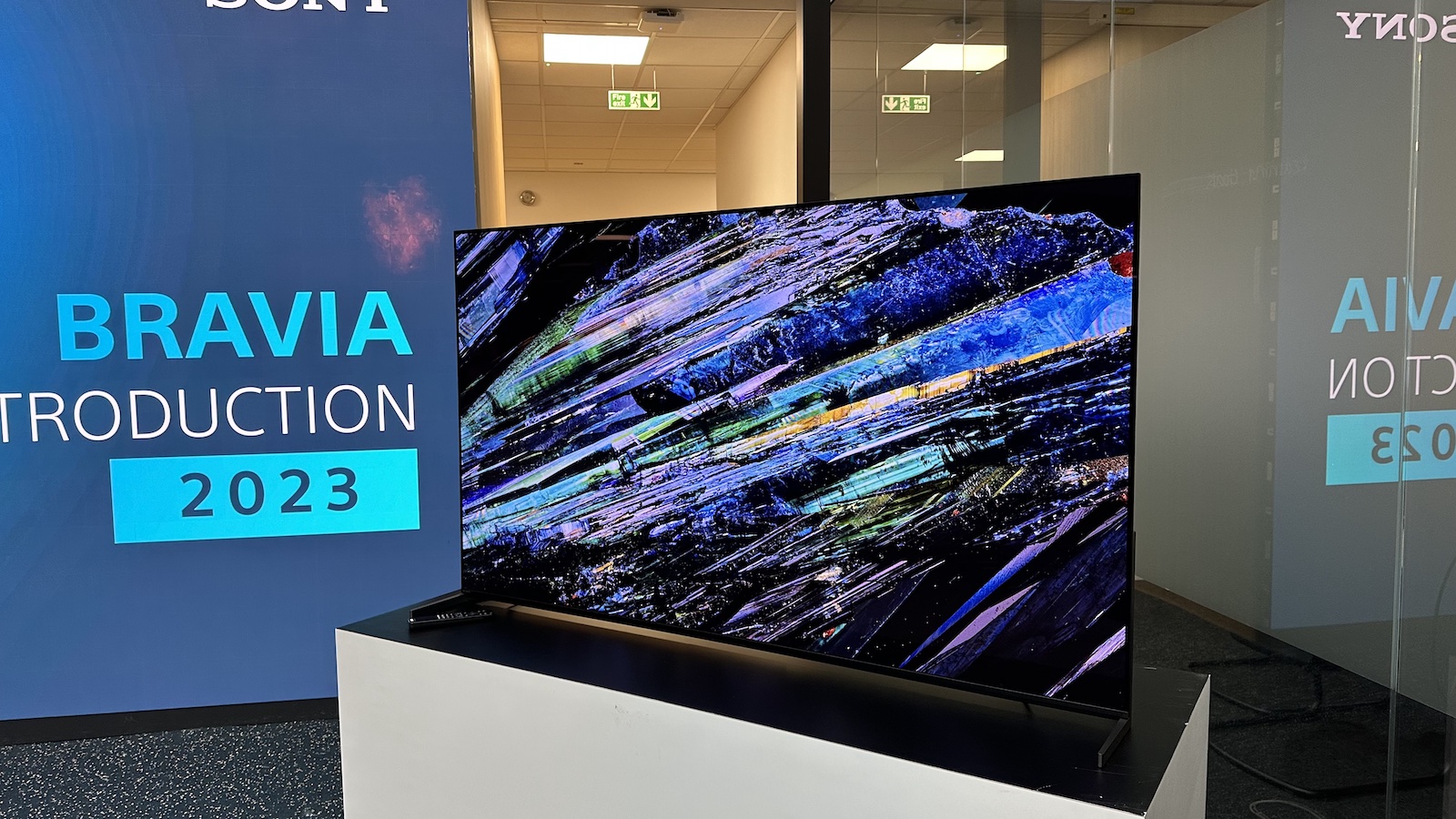
It's too early to call a winner – we'll need to conduct a full review of the A95L before we reach a proper verdict. What we can say at this stage is that things aren't looking as evenly matched as we first anticipated.
We were slightly disappointed by the Samsung's picture, which proved to be more dull than we'd anticipated. And were seriously impressed by the A95L in our demo, which has us thinking that it might prove the better-looking TV. We're eager to get the upcoming QD-OLED into our test lab to see how it stacks up next to the S95C.
If it does prove to have better picture quality, the question then becomes: Is it that much better to warrant the higher price? We'll deliver a full verdict once we get a test model into our labs.
MORE:
The MLA OLED option: read our full LG G3 review
Read our full Samsung S95C QD-OLED review
As well as our Sony A95L QD-OLED hands-on
Check out our picks for the best TVs
And also the best TV deals







